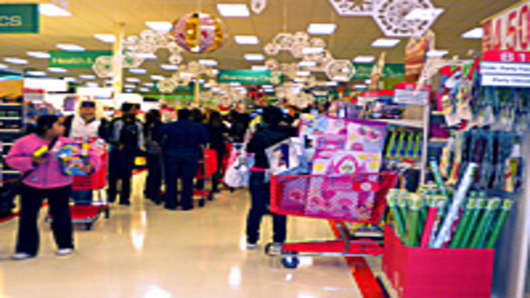This weekend, as you pull into the shopping mall parking lot for the hottest Black Friday sales, it’s entirely possible that your picture will be snapped by a satellite orbiting high above the Earth.
Its being done by retail-market analysts who want to know how many customers are heading to the stores — and what that means for retail stocks this season.
And they’ve spotted a trend they think means this is going to be a very merry holiday shopping season.
The satellites snap pictures of hundreds of shopping malls, and analysts painstakingly count the cars in the parking lots of each one, looking to pin down the fill rates of each parking lot.
Armed with that number, analysts can compare this week’s shopping activity with the same week in 2009 and in 2008.
The company at the heart of all this satellite spying on shoppers is called Remote Sensing Metrics, a small, Chicago-based consulting firm that analyzes the satellite imagery and teases out market-moving data from the pictures it sees.
“2010 is proving to be a much better year in terms of traffic,” said Tom Diamond, CEO of Remote Sensing Metrics. “Beginning in September 2010, late back-to-school shopping discounts boosted traffic as people shopped closer to the event.”
Remote Sensing Metrics in turn buys its pictures from a Colorado-based company called Digital Globe, which launches and operates its own satellites in orbit.
They looked at the 10 weekends leading up to Black Friday, the traditional start of the holiday retail season, and then sorted the data they came up with by zip code, so they could further break out shopping patterns in areas with high or low unemployment and with high or low average income.
According to data provided to CNBC, Remote Sensing Metrics found that the average shopping mall was 31.6 percent full in 2008 during the weeks leading up to Black Friday. But in the teeth of the recession in 2009, that figure dropped to 31.0 percent full.
Black Friday itself saw a noticeable drop off from 2008—when many people had not yet felt the job-loss effects of the crash of 2008—to 2009, by which time millions of jobs had been vaporized.
In 2008, the average Black Friday parking lot fill rate was a healthy 53.0 percent. But that number dropped significantly by the grim Black Friday of 2009, to 46.6 percent.
Heading into this year, though, the satellite analysts report that the numbers appear to have flipped again. While the 2009 average pre-Black Friday fill rate was 31.0 percent, the run-up to the big day this year saw a 35 percent average shopping mall fill rate—raising expectations that this will be a much more robust shopping season than retailers experienced last year.
And that trend seems to be continuing — even in areas with high unemployment and low income.
In 2009, for example, zip codes with high unemployment rates saw shopping mall fill rates of 28.3 percent on average before Black Friday. But in 2010, that number has jumped to 32.7 percent. In both years, areas with relatively higher employment also saw more shopper activity — 32.0 percent full lots in 2009, and 34.9 percent full lots so far in 2010.
It’s a similar picture in zip codes with low average income.
In the below-average income zip codes, parking lots were 27.8 percent full in 2009, but stood at a much healthier level of 32.1 percent full so far this year. And as always, the wealthier areas saw better activity, and are improving as well. Above-average income zip codes showed 33.9 percent full parking lots in 2009, which has bounced to 37.2 percent full in 2010.
“Retailers used heavy and early discountingin 2009 to get shoppers in stores earlier, and the same thing is happening in 2010,” said Diamond. “Based on our data, it seems that even if traffic cools down into Black Friday, 2010 will be net positive over 2008 and 2009 throughout the holiday season.”




